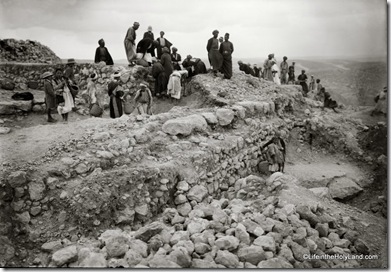Eisenbrauns, a favorite among many academics working in biblical and Ancient Near Eastern studies, has recently begun a “deal of the day.” Typically the price reductions are outstanding (60-90% off!), and often the book is of interest. Today’s offer is The Excavations at Bethel (1934-1960), regularly $35 (or used, $21), today $2.50, which is 93% off. (Plus $5 shipping.)
For such a deal, there are a few hurdles to overcome. First, to learn about these daily offers, you should subscribe to the RSS feed. Unfortunately, the link never seems to work in my (Google) reader. But when you see a title of interest, you can go to the Eisenbrauns home page and navigate from there. Second, the description of the volume as related to the excavations of Beth-Zur should be ignored. Third, the author is not Julie Kelso, but William F. Albright and James L. Kelso. And fourth, there’s a real question that the excavations are even of Bethel! Other that that, as they say, everything’s perfect.
I am not trying to provoke an argument about the location of Bethel. I am not advocating for another location. I simply suggest that if you read this excavation report you will not find any compelling archaeological evidence that indicates that this site is biblical Bethel. And in fact, there are serious deficiencies with what was found. But I am not going to argue against this identification on the basis of the absence of evidence. I am willing, however, to point out that if this was one of the greatest cities of the northern kingdom and the home of one of the major shrines, one would expect to uncover much more than they did.
A related note. This is related both to the Bethel/Ai debate and to the incorrect first name of the author of the title. A few days ago I came across a reference in Richard Hess, Israelite Religions, to two entries in the New Encyclopedia of Archaeological Excavations in the Holy Land. He cited the author of the Ai article as Joseph A. Callaway, but the author of the article of nearby Khirbet Raddana as James A. Callaway. Unfortunately, his citation follows the original; NEAEH “misspelled” Callaway’s first name. As far as I can tell, the new Volume 5 does not include an errata.
Speaking of typos, here’s an embarrassing one, on the packaging of the esteemed Anchor Bible Dictionary, no less! (For non-Hebrew readers, the text on the CD design has the first two words from Genesis, but the letters read from left to right.)
Quibbles aside, every book mentioned in this post is worth buying if these are subjects of interest to you.
